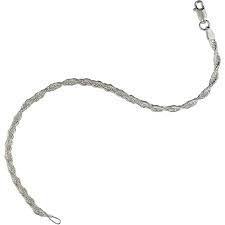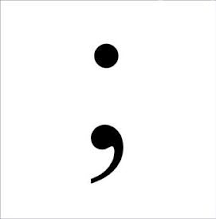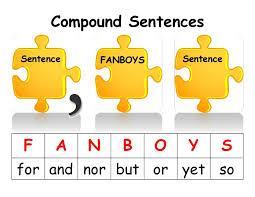Tim Learn's Blog, page 21
October 12, 2015
Betrayal of Ka
Betrayal of Ka
(Adult Sci-fi)
By Shea Oliver
Rating
Synopsis
Mindlessly following the highs a teen life can give him, Ka trumps a teacher after scoring a date from his dream girl. It is like heaven. But then, his business on the side steps in, and after a kid OD’s on his drugs, Ka’s life changes. He finds himself being shifted off to a penal colony on another planet as his old world shifts under tyrannical and ambitious powers. In the end, Ka is barely recognizeable. On top of that, he’s millions of light years away.
Prose
The author here keeps a very straightforward tone, giving us the nuts and bolts of each character and scene as fast as possible. In this way, it is fast paced, keeping us reading at every turn. Never is there a chapter beginning or end that dwells to heavily on description, drawing the story out for mere word count. Take a look.
Fifty-eight stories above Schmarlo’s Landing, Tomar Donovackia kicked his feet onto his desk. No one would question anything he did.
Every line packs a punch and keeps the scene and the story going. Throughout the whole book, maybe one or twice did a moment lag or feel unneeded, but not often.
On top of this, there were few flaws. One thing he might have to keep an eye out for is POV shifts. Every so often a scene would start in one character’s head and sometimes it would jump around. Often, this wasn’t a bother. The most noticeable for me was when Ka got to see his mother and father for the last time before being sentenced to a penal colony. It is clearly Ka’s POV but then it jumps into the mom’s head, followed by the father’s perspective in two short, sequential paragraphs. Unnerving—yes; but not detracting from the story as a whole.
Characters
As for characters, he knows how to make likeable ones, or at best, understandable ones when their personalities might not be so desirable. In the beginning, Ka comes off as a normal teenager for the most part and is kind of flat and boring. Frankly, he needs to be. If not, there’d be no growth. But as soon as everything starts rolling, you feel for Ka deeply, despite his previously flawed actions.
Even when it comes to the antagonists-whether Tomar or Jackos—the author paints them realistically with little characterization. Tomar, though full of himself and ambitious, feels fully real—like an intergalactic Donald Trump, but more interesting. And despite being the stereotypical jail gorilla, Jackos comes off genuinely unique while still being fully threatening. Overall, well-done in this department.
Structure
This is a space opera. There’s no other way to describe it, and the author does an amazing job of world building for his twin planets inhabited by humans. And with little foresight, we soon realize that these planets will draw Earth into the mix as universe-dominating plans are developed.
At the heart of it, it is Ka’s story of his crime and his eventual redemption, but there is so much more. The amount of characters in this books is large, and clearly many will pop up again as this book is the first of a series. Even at the end of this book, there are lingering questions in regards to the Lords of the Fourth Realm, Celestina’s destiny, and of course, what Jackos will do on earth.
Regardless, the author ties up the main story nicely, giving us enough hints for the future books. Again, well done.
Overall
I gave this five stars, which is all the more surprising because I usually don’t like sci-fi, especially books that tote strange planets and names, but this one did it in grace and style. And it was an amazingly fast read! But beware, it does come in at a little over 375 pages. Still, I finished it in less than a week, which compared to other smaller books I’ve forced myself to trudge through is quite telling. There is emotion in the book, and though it touches on universal themes everyone has dealt with before, in no way does it detract from the book. It’s a good distraction if nothing else.
To find the book, click here.
To see the author’s website, click here.


October 7, 2015
My Top Three Quick Editing Notes
My Top Three Quick Editing Notes
When I’m not busy writing, I’m reading, and more specifically, I’m reading self-published works to help those authors out. By doing so, I’ve picked up on three easy ways to improve any manuscript that even I am guilty of, but having seen them so often, these mistakes are now in the forefront of my mind when editing. Here they are:
1) Would / Could
I was not even aware of this flaw until I began seeing it a lot of other writing. Then I turned a sharp eye to my old work and saw the same error pop up—the use of the word ‘would.’ Take a look.
He was glad he wouldn’t be the one to clean up the room.
or
She would seem to be getting better.
Now, I’m not saying to never use the word. That’s ridiculous. But, clearly, in the examples above, using the past tense of ‘to be’ is more efficient. ‘Would’ is commonly used as the past tense form for ‘will’ or to show conditionality, so in situations were you need to make such a future bound or questionable statement, it is still okay. However, when the word is used in its uncertain or polite sense, then you need to take a closer look and possibly change it. Clarity is best. Like so.
He was glad he wasn’t the one to clean up the room.
And
She seemed to be getting better.
2) Continuous
This is another one I see many trip up on. I think it stems from our youth, telling stories to each other or recanting the crazy events of the day to mom and dad. In that sense, continuous in any form is good…just not in writing. Continuous should only be used if the event is happening now—whenever that present moment is—or when two things happen at the same time. It should not be used to just describe something, like below.
A moment after stepping into school, I saw her. Her face was red, and her eyes twitched. She talked to some other girls and then was coming right up to me. I didn’t know what to do.
The first usage is fine. It is, in fact, a truncated adverb clause. The second, however, is a different story. Here, the ‘she…was coming right up to me’ could easily be replaced by ‘she…came right up to me.’ It is clearer and more direct, which is what an author desires.
3) Present Perfect / Past Perfect
This one is not so clear-cut, for many reasons. The biggest one is culture. American English tends toward using simple past more than anything else while British English likes to thrust in their present and past perfects from time to time. In a way, it could be preference, and in no way am I saying one way is clearer than another. But, coming from America, I feel the less wordage, the better. Check it out.
After lunch, he had gone back to work but, within minutes, was sick.
Or
I have seen this man before but, at that moment, couldn’t remember where.
So, here, I would find these structures grating and too wordy. Though there are times when they might be a better fit, erring in the favor of simple past has always been the best in my book. Again—preference! But I feel the sentence rings truer than before. You decide.
After lunch, he went back to work but, within minutes, was sick.
And
I saw this man before but, at that moment, couldn’t remember where.
Obviously, there are many more little nuances that every writer keeps their eye trained for. If you have any particularly unique ones, please, leave a comment. I’d love to hear them.


October 5, 2015
Elephants Never Forgotten
Elephants Never Forgotten
(Middle Grade Sci-fi)
By Ellis Nelson
Rating
Synopsis
Receiving a herd of micro-elephants upon her grandfather’s death, young Nigella Rose embarks on the mystery of missing elephants. Purportedly a massive outbreak wiped them out ages ago, but as clues start popping up, Nigella and her friend begin to believe otherwise. In the end, Nigella finds more than she’s bargained for.
Prose
Unlike my last review, here, the tone throughout matches beautifully. Whether deep in description or flowing with dialogue, the words fit and have a great ease to them, perfect for the reader level and the age group of the protagonists. All of this helps make it a quick read, as shown below.
For a while, they would follow this eastward progression. The girls could hear a chorus of frogs echoing through in the early morning light, despite the noise of the engine. As the sun rose higher, it started to burn off the fog. Its vapor easily joined the Delta’s humidity. Nigella felt more energized and more confident as the sun rose higher and higher.
As you can see, it flows nicely with a wonderful rhythm while not dwelling too long on any one particular point or detail, like many newbie writers tend to do. I found it straightforward and refreshing, in this way.
Characters
As for the characters, they were very distinct—the ones that actually enter our frame of reference long enough to identify with. Nigella is a young girl who has lost her mother, and now her grandfather. The author does a good job express her loss and need to feel closure.
Nigella’s best friend, Kepler, comes off best friend-like, accommodating and supporting Nigella whenever she needs it, though, at times, falling flat with her jokey nature. Humor is difficult no matter what age group.
Truthfully, my favorite character was Martin, their pilot in Africa. His voice and character were so distinct right from the get-go. All the small details he provided in both action and dialogue were sparkling, as seen in this quote.
“Bezi, he likes to drink. When he drinks too much, he gets sick. Today Bezi is sick, so I fly for him.”
And on that, it’s best to move onto the next topic, which is also the reason for my lower score.
Structure
While the characters glowed, for the most part, and the writing rolled, there were still some galling flaws in the story altogether. The main one: plot!
The story doesn’t really get rolling till more than halfway through, and even then, it goes at a slow pace. The first scene, in fact, is a visit to the vet, which offers no insight to the real story whatsoever. Essentially, there is no draw, nothing that grabs and pulls along.
This is further exemplified with each chapter ending. Most authors plan meticulously how a chapter will end in order to stop on a high-note. When done well, the reader is given the sense of urgency and continues reading—the definition of an unput-downable book. Here, however, each chapter, on average, ends with a mundane action. In fact, quite often, we see the chapter close with her wrist phone ringing. The next chapter she answers it and it’s her friend—surprise?
The sad thing is…there is a story hidden in the book. Unfortunately, it is out of order or crammed into certain pages where mass info-dumps are thrust upon the reader. If these paragraphs were unfurled and delved out in a creative way, along with the real plot shuffled around to create a little suspense, this book would be a thousand times better. As is, it just barely passes okay readability.
Overall
There is promise to this book. The story had a real message and in certain areas really shined. Nonetheless, most of the time, it drags, dwelling on the everyday events of its characters that are, truly, well written, even if not sparklingly entertaining. For the age group it’s aimed at, this book is perfect with word and structure, but most might find it a bit bland, unless they have an immense love for elephants.
You can buy her book, here.
And check out the author’s website, here.


September 30, 2015
To Beat a Grammarian: A Preface
Why I Want to Beat a Grammarian
 After finishing my first book, I quickly realized there were many things I didn’t know about writing. Clearly, I can string lines together and make them coherent, even sometimes cohesive. Yet time and time again, comments arose about my grammar. And, to be honest, I was shocked. I’ve taught grammar and language for years now, so to have someone finger my lines or to sometimes full out lambast them was more than mind-boggling. But that’s the thing—most people spend very little time really looking at the details. I taught it, but I taught the fundamentals. When it comes to writing something with a much larger scope, the sentence variation—I hope—will range just as much, too.
After finishing my first book, I quickly realized there were many things I didn’t know about writing. Clearly, I can string lines together and make them coherent, even sometimes cohesive. Yet time and time again, comments arose about my grammar. And, to be honest, I was shocked. I’ve taught grammar and language for years now, so to have someone finger my lines or to sometimes full out lambast them was more than mind-boggling. But that’s the thing—most people spend very little time really looking at the details. I taught it, but I taught the fundamentals. When it comes to writing something with a much larger scope, the sentence variation—I hope—will range just as much, too.
In this way, I noticed I needed to brush up on my skills, on the minutia of grammar that so many purported experts flaunt. With modern day advancements, I checked for an e-book that could aid me in my struggle and…came up empty handed.
The large flaw with looking for such a book is there are only two types out there. The first one waxes on and on about how to write a stunning first paragraph, a strong protagonist with deep flaws, and a manuscript lacking POV shifts. All of this is the bedrock for good fiction and…absolutely not what I wanted. The other jumps into the nuts and bolts well enough (Strunk and White) but leaves much to be imagined. It may cover the basics, but there are so many loopholes that how can one feel positive about it all.
That’s when I began to compile the grammar points I happened to stumble across—and I’m not talking about the difference between it’s and its. I mean the glaring errors I found others remarking on in my manuscripts, the errors that no other books adequately explained. And, of course, the best way to learn it is to write it.
So here we are.


September 28, 2015
MythWinter
MythWinter
(Middle Grade Fantasy)
By Nick Green
Rating
Synopsis
Having gone to another school, Anna feels her old friendships fading when a thick snow covers her town, which means only one thing—no school! On this simple, snow day, she rejoins her old friends, only to find herself the outsider until she stumbles upon young Jack—the god of winter. After that, her world is anything but simple.
Prose
When it comes to the writing, well, I’m split. Hopefully, you’ll see why. First, the basic narration and description are amazing and inventive, drawing up images of the winter wonderland in exquisite detail. Check it out.
There came a sound. A sort of fizzle, like an ice lolly wrapper peeling off.
Or
Many rooftops sported plumes of steam, ghostly flowers blooming from boiler vents and blown to shreds wherever Jack’s snowboard passed.
Succinct and powerful—as description should be. However, this is where the problem arises. First off, some scenes were too overly wrought. This fault has gotten the best of us—myself included. Wanting to elaborate to have the scene set just right is a guilty pleasure all authors indulge, but the next point is where I have a disconnect.
The author masterfully depicts his world in complex ways and yet his characters speak in almost a babyish manner. This dichotomy is most of the time jarring and completely takes me out of reading. True, children speak in childish ways, but then the world should be filled in such a manner as well, not strong blocks of the outer world, only to be shelved next to weak, repetitive dialogue. See for yourself.
‘Those, um.’ Jasmine hesitated too. ‘Those amazing snowballs. How did you, er?’
‘They were like magic, weren’t they?’ said Anna.
Or
‘…Oi, what do you mean, you hate winter?’
‘I don’t mean you, I think you’re lovely…’
Characters
Besides the mismatch of language, I had a large problem with one certain character in particular among the many strong ones.
Among the ones I liked, the menacing Kimberly who harassed our Anna was wonderful—needing no cause for her malice—though this was ruined later with some small explanatory note. Overall, even the imagined gods for each season were well done and imaginative.
The character that bothered me the most was the dog, Caspar. In the beginning, we are told he has only three legs, making him unique and this was one sole reason Anna loved him. In this way, it felt like the dog was important to the plot and he tagged along regularly on all the adventures, but really played little role. I question if he was necessary at all, and most of the time, things would’ve run along much smoother if he were not.
Structure
The full story was delightful and moved swiftly after a bumpy start. The first chapter gave a good feel of Anna, but, in my opinion, was not needed. Also, the mention of her parents here and there seemed unneeded. Keeping the main focus on Anna and her exploits would’ve made the story stronger, but as I said, there was little deviation after the beginning.
Another thing to note was the ending. The author pulled a little trick on us—one most MFA programs warn authors to avoid—and I feel here, too, it cheapens events in the story, or, at least, detracts from the course of events’ impact.
Overall
This book is well imagined. I loved the play on old concepts and the constant upping of conflict in young Anna’s world. There are times of fun and stress that are well written. However, overall, small things, like the mismatch in tone for dialogue and description, and the resolve of the plot at the end, undercut the strengths in this work. Besides that, it was a fast, simple read. Young ones would clearly enjoy it.
To find this book, click here.
Unfortunately, I have no record of a website for the author.
September 27, 2015
Another Chewy Noh and the Phantasm of Winter Review!
Check out this wonderful review by super energetic Cindy!
Thanks Cindy!
http://cindyreadsalot.blogspot.com/2015/09/chewy-noh-and-phantasm-of-winter-mmgm.html


September 22, 2015
To Beat a Grammarian: Semicolons
To Beat a Grammarian: Semicolons
These are probably the least understood of punctuation marks. I see students misuse it, and well-known authors throw it about with little regard. It’s a freak in its own freak show, really, and like commas, a little knowledge can help out discerning what situations to use it in. Above all though, less is better.
1) Transition Words
If you recall from before what FANBOYS are (Commas: Back to Basics), in many texts, it is improper to use them at the beginning of sentences. To avoid this, writers use transition words, such as however, also, thus, and otherwise. These words function the same as their respective counterparts—but, and, so, and or. Like this:
I wanted to see the movie, but I had no time.
Normally said as:
I wanted to see the movie. However, I had no time.
This can be change to:
I wanted to see the move; however, I had not time.
What’s key here is that FANBOYS are never linked to a semicolon, only transitions words are. To understand this more, let’s look at the next point.
2) Tying two related ideas together
This is essentially what transition words represent; however, they needn’t always be present. If the connection can be made without the necessary wordage, then all the better. See below.
Meeting my sister is a hassle; she never stops yelling.
Or
I went on the blind date, meeting him at a local coffee shop; it was a disaster.
Now, in both of these incidences, a semicolon can be used to either stress the relationship between the two independent clauses or to tie them together to bypass the pause linked to a period or comma that would take its place.
Nonetheless, the difficulty arises when many authors overuse it. When every paragraph has one, two, or more, the effect is belittled. The best would be to show emphasis, which like raising your voice to stress something important, if done all the time, well, you’re just yelling and nothing comes off particularly different.
3) Super Comma
This one is a little bit easier. In many situations, when commas abound, then we needed to discern the difference between one comma usage and another. Here we find the most functional usage of the semicolon.
I went to see Paul in Chicago, Illinois; Matt in New York City, New York; and Tom in jail.
Or
Some kiss girls; others, boys.
As can be seen in the top example, the super comma—cough!—I mean semicolon acts as a comma when too many commas are already present. The second is when a similar sentence structure is repeated with the verbs cut out as we often do in speech by raising our eyebrows or dramatically pausing.


September 20, 2015
Bala-Gala the Brave and Dangerous
Bala-Gala the Brave and Dangerous
(Children’s book)
By Gita Reddy
Rating
Synopsis
Bala-Gala encounters many dangers, changing each time into something more fitting for its environment.
Prose/Structure
I’ve read many books on the myths and beliefs of India. Their gods are sly and all-powerful, and usually have a much greater plan in mind for whatever they do. Nothing is simple.
With this book, I can’t help having the same feeling that something much bigger is going on. The author presents her story in clear, concise prose—the simplicity of which rings like so many of those myths.
Bala-Gala did not mean to frighten his little friends but he was so large and powerful that when he ran, the ground shook under his feet.
On top of this, the names for all the creatures and elements in the environment come off with playful, yet telling sounds. We have the ‘River Kanga,’ and ‘Brammy-Gommy,’ not to mention our main character.
With the twist in the end, this story can be nothing more than a simple children’s story or a deep allegory. Simple stories are best for that reason. They reflect more upon the reader than the writer. We are left responsible to sift through it and figure it out.
Overall
It was a simple story, maybe too simple for some. That is the only reason I gave it a lower score than the highest. I’ve read other simple books and have come away with something missing, but with this one, I found there was much more hidden inside. The only complaint I’d like to make is that reading it in e-book format, the pictures were always a swipe away. It would’ve been wonderful to have them side by side with the text.
To buy the book, click here.


September 17, 2015
The Remedy
The Remedy
(Middle Grade / Fantasy)
By Susan Srikant
Rating
Synopsis
When Joss’ sister, BiBi gets sick, it’s up to Joss to save her from the poison consuming her body. Unfortunately, there is no cure until Joss and her friends get wind of the ancient human friends, the Jarrlocks.
Prose/Structure
Let’s start out with what’s good. The author wastes no time on details or long explanations. She gets the story rolling right away with young Bibi eating some poisonous berries. That’s just chapter one! So there she does well.
On top of this, she has a wonderful use of words, especially when dealing with describing action and their surroundings. Check out below:
Mr. Hall slipped an arm around his wife’s waist in an attempt to provide some comfort while fighting to contain his own anguish.
Or
But a firm hand grasped her exposed ankle like a vice, wrenched her from the hole, and dragged her along the ground.
And for these reasons, I didn’t give her a much lower score. She has talent with words, but…there are areas that are lacking. For instance, dialogue. Far too often, her dialogue is apropos to nothing, shoved in our faces with little or no revelance to the events around them. One such incident: earlier in the story a hawk attacks Joss. Later she brings it up by saying,
“Have you ever known a hawk to dive at someone, I mean over and over, like it was set on tearing the person to shreds?”
Not only do her words feel unnatural, the way this conversation arises in the story feels forced. After which, Miss Gizelle—the know-everything-about-strange-creatures character—explains about Krone and his hawk, Havoc. Clearly, Joss’ dialogue above was to give us this exposition. However, shortly after, Anton is attacked badly by the hawk and then has his wounds treated by Miss Gizelle who could’ve delivered the same information then, at a much more prudent story point.
That’s not all. As above, we hear about Krone who appears to be a big bad guy the moment we hear him step into Miss Gizelle’s house one night, and yet he actually poses very little problems for the kids and seems to have no real agenda at all, especially for chasing after them. On top of this, he is thwarted with ease.
Now, it may sound worse than you think, but there is a lot of imagination in the book. The author picks out wonderful names for many strange creatures and objects she invents. Clearly, she has imagination. Unfortunately, she still needs to work harder on her plot and dialogue. The rest was top notch.
Overall
The book was fast read, so bad or good, it doesn’t take much time. When the story is bogged down by useless, non sequitur dialogue, it actually flows quite nicely. The big problem is she writes description and action scenes quite well, but the age group and the genre she’s writing for tend more toward strong and unique dialogue. If I chose to read like some of my students—skipping over large paragraphs to get to the juicy things characters have to say—I’d end up missing the most sparkling parts. In the end, a little more work, and it would’ve rock-solid.
Check out The Remedy, here.
Or the author’s website, here.
September 14, 2015
To Beat A Grammarian: Commas (Part Four: Back to Basics)
To Beat a Grammarian: Commas (Part Four)
Reading books to my daughter, I’ve noticed one tricky thing about commas and printed books: their usage grows as the reader does. Does the publishing world do this on purpose, like training wheels on a bike, slowly graduating us to higher and higher levels of commas? Or, quite possibly, like a drug-addict, we get immune to them and need higher doses. Either way, their presence grows, and most often the first place they pop up is with the ever-scary sounding ‘coordinating conjunctions’ or—as the kids call it—FANBOYS.
If you didn’t know, FANBOYS are for, and, nor, but, so, yet, and so. They are connecters and are the first step in comma usage that all kids learn—and usually learn incorrectly for a lifetime. Nonetheless, it is quite simple.
1) Complete thoughts
A comma is always inserted before and almost never after FANBOYS, as per below.
I went to the store, and my friend came along.
In this line, there are two separate ideas with their own subjects and verbs. If one subject is missing, then the comma is thrown by the wayside. See:
I went to the store and bought some milk.
This is true then for the most part unless you began racking up more than two, like below.
I went to the store, bought some milk, and drank some coffee.
2) Starting a sentence with one
In most professional writing, this is forbidden. Starting a sentence with FANBOYS is tantamount to swearing, and a sharp teacher will berate the hell out of you for it, and rightful so. It shows lack of flexibility and skill, and that is why businesses and schools have adopted it. However, in the world of fiction, it doesn’t matter. With it comes a lot of headaches.
The trickiest problem arises when modifying clauses are appended. People get all confused—as do I, from time to time—when a comma should or not be tossed in. No rules are ironclad. I understand. Take these examples.
I went home. Yet no one was there.
And
I went home. Yet, after checking, I found no one was there.
The adverb clause that follows the second example deserves the comma to separate if from the main clause that the ‘yet’ is actually referring to. If you want to avoid the comma, you can merely toss the clause at the end of the sentence. However, this is what allows for sentence variation and one should know how to use commas in this way to help break up monotony. But always remember, that—like this sentence—a comma should not be inserted just because FANBOYS begins a sentence. Too many have made this offense—myself included.



























